- Home
- Roxane Gay
Bad Feminist: Essays Page 8
Bad Feminist: Essays Read online
Page 8
Even though her desires are often muted, Ruth has them. She longs for things even if she does nothing to reach for her desires. Maria Wyeth longs for things she could not possibly reach for—a dead mother, a sick daughter, an aborted fetus.
Like Ruth, Maria is willing to make herself prey, willing to be woman as victim. In a parking lot where several boys are vandalizing cars, Maria walks right toward them:
She kept her eyes steady, her pace even, and when she found herself unlocking the car under their blank gaze it was with extreme deliberation. As she slid into the driver’s seat she stared directly at each of them, one by one, and in that instant of total complicity one of them leaned across the hood and raised a hand in recognition of what had passed between them, his palm out, inscribing an arc in the still air.
When Maria emerges from such situations unscathed, there is a sense of disappointment, that she cannot be freed from her weariness.
Toward the end of Play It as It Lays, Maria has a one-night stand with an actor she doesn’t even like. As dispassionate as Ruth fucking the bartender, Maria lies still beneath the actor. When he falls asleep, Maria takes his Ferrari and drives to Vegas, near where she is pulled over by a highway patrolman for speeding. The agent she shares with her husband, Freddy, comes to rescue her and finds Maria is “still wearing the silver dress and she was still barefoot and her face was streaked with dust.” On the flight back to Los Angeles, Freddy says he doesn’t understand girls like Maria. He says, “I mean there’s something in your behavior, Maria, I would almost go so far as to call it . . . Almost go so far as to call it a very self-destructive personality structure.” Maria doesn’t bother to respond, and why should she? Freddy only has one idea about girls like Maria. He’s not interested in trying to understand her as an actual person.
We are left with Maria Wyeth in a psychiatric facility. She has committed a terrible crime. The people in her life think she is crazy, selfish, self-destructive. Maria is probably the sanest person in her sad group of lovers and friends. She wants nothing more than to get out and take her daughter and raise her. As the fallen green girl, Maria knows something Ruth could never know. In trying to explain herself, Maria says, “I know what ‘nothing’ means, and keep on playing.”
If Ruth is woman as green girl rising, and Maria Wyeth is the green girl in fall, the women of reality television are the green girls interrupted, green girls at their most garishly exposed, cut open for the cameras, performing the best and worst parts of themselves for attention, to be seen, for love, to be adored, for fame, to be wanted.
Reality television often gives the impression that, like gender, the whole of life is a performance. I love watching that performance—one where people reveal how we are willing to compromise ourselves for something as fleeting as fame. The Los Angeles mansion or the tropical jungle or the fading rock star’s tour bus is the stage, and what a stage it is—brightly lit, lurid, encouraging us to see the garish spectacle of life at its most artificially real. I watch it all—the faux highbrow fare of Bravo, the booze-soaked MTV programming, the glossy competition shows on CBS, the sleazy exploitative fare of VH1, and even the off-brand shows on lesser cable networks, like Bad Girls Club and Sister Wives.
No one shines more luridly on this faux-real stage than a woman. Whether it’s a modeling competition, a chance to compete for love, a weight-loss challenge, or a look into the lives of an aging magazine publisher’s harem, women are often the brightly polished trophies in the display case of reality television. The genre has developed a very successful formula for reducing women to an awkward series of stereotypes about low self-esteem, marital desperation, the inability to develop meaningful relationships with other women, and an obsession with an almost pornographic standard of beauty. When it comes to reality television, women, more often than not, work very hard at performing the part of woman, though their scripts are shamefully, shamefully warped.
Reality Bites Back: The Troubling Truth about Guilty Pleasure TV, by Jennifer Pozner, skewers reality television for its sexist, racist, and dehumanizing tactics in nearly every genre of reality television. While I think of myself as media literate and a feminist, I don’t know that any book I’ve read this year has made me as uncomfortable as Reality Bites Back for its incisive examination of what I have often thought of as harmless entertainment programming. I had to question what it says about me that I take so much pleasure in the drama of The Real Housewives of Beverly Hills or the drunken, weave-snatching antics of Rock of Love or Flavor of Love. I, like many others, take pleasure in what Pozner brands “the cathartic display of other people’s humiliations.” These shows exist because audiences need reminders of the wrong turns our lives might take.
In her analysis, Pozner reveals the many tropes reality television exploits—women as “catty, bitchy, manipulative, and not to be trusted,” for example—and how these tropes are coded into every aspect of these shows, from marketing to how the shows are scripted. The green girls interrupted are manipulated into becoming the worst versions of themselves, and while certainly anyone who goes on a reality television show in this day and age has a certain level of reality sophistication, one gets the impression, from Pozner’s critique, that these green girls do not have the intimate self-awareness of a Ruth or a Maria Wyeth. They don’t have an opportunity to develop this self-awareness because the “reality” of reality television is so heavily constructed these women can only be aware of the artifice surrounding them and the parts they are scripted to play within that artifice.
Perhaps no reality television better exemplifies the green girl interrupted, the green girl wholly aware of the artifice surrounding her and somewhat complicit in maintaining that artifice, than VH1’s now defunct “Celebreality” shows Rock of Love and Flavor of Love. In Rock of Love, women vied for the affections of fading rock star Bret Michaels, while in Flavor of Love, the women vied for the affections of has-been hype man Flavor Flav of Public Enemy. In each of these shows, the women deftly play the part of bad (green) girl or good (green) girl or good (green) girl gone bad—each pretending the former star is the center of the romantic universe amid freely flowing alcohol, forced interactions designed to create artificial but vicious conflict, writhing on stripper poles, and other luridly spectacular scenes. In Flavor of Love, the women don’t even keep their real names. Instead, Flav, as the women call him, assigns each woman a new name of his choosing because he cannot be bothered to see the green girl interrupted for who she really is. The names range from the silly (Smiley) to the degrading (Thing 1 and Thing 2). The show’s artifice allows these women to easily step into constructed identities through this renaming. The women are undoubtedly exploited, but they often seem resigned to it and willing to revel in that exploitation rather than challenge it.
In both shows, across multiple seasons, these green girls interrupted go through the motions of looking for true love with men who are contributing to the artifice by spouting hollow sentiments and platitudes as a means of seduction while metaphorically winking at the camera to let us know they know how unreal their reality is—usually during the unscripted confessionals. The exploitation, and these women’s participation in it, continued when many of the women from both shows went on to appear on spin-offs with equally artificial premises like Rock of Love: Charm School, Charm School with Ricki Lake, I Love Money, several shows for former Flavor of Love contestant New York (a.k.a. Tiffany Pollard), and on and on. During each of these shows, these women rarely demonstrate any self-awareness. Instead, they reveal how intimately aware they are of the artifice around them and what that artifice will bring them (attention, a modicum of fame, money). These green girls interrupted are the parts they must play, and within the context of these shows, they do not evolve beyond those roles. They remain interrupted.
If reality television has any connection to reality, it is that women are often called upon to perform their gender, whether through how they present themselves and their sexuality, how they behave, and
how they conform (or don’t) to society’s expectations for women. The repetition of gender acts in reality television becomes grossly stylized through artificially tanned skin, elaborate hair extensions, dramatic makeup, surgically enhanced bodies, and chemically injected faces. The acts become grossly stylized through bad behavior, often carefully orchestrated by producers. Under the persistent glare of the camera, these women have little choice but to sacrifice themselves for our entertainment. The women of reality television are, perhaps, the greenest of girls, women who revel in watching themselves suffer because they have been so irrevocably interrupted they do not know what else they should do. We can’t look away. These women—these interrupted Ruths and Marias—look at their ruin. They are such garish, glorious spectacles.
At the end of Green Girl, Ruth wants some kind of rebirth, some way of making herself clean. She wants to “smash that thing that houses me inside of myself.” She decides, “I want to go to a church and direct my eyes up high and open my arms open my arms up to the ceiling. And scream. And scream. And scream.” She wants to scream in both agony and ecstasy. She wants to lose herself as much as she wants to find herself. The same thing could be said for Maria Wyeth. And, perhaps, the same thing could be said for the women of reality television as they break themselves against one another, against the camera, against the ways they are expected to perform their gender.
What may be most terrifying is just how real reality television is, after all. We say we watch these shows to feel better about ourselves, to have that reassurance that we are not that desperate. We are not that green. But perhaps we watch these shows because in the green girls interrupted, we see, more than anything, the plainest reflections of ourselves, garishly exposed but unfettered.
Not Here to Make Friends
My memory of men is never lit up and illuminated like my memory of women.
—MARGUERITE DURAS, The Lover
In my high school yearbook there is a note from a girl who wrote, “I like you even though you are very mean.” I do not remember the girl who wrote this note. I do not remember being mean to her, or to anyone, for that matter. I do remember that I was feral in high school, socially awkward, emotionally closed off, completely lost.
Or maybe I don’t want to remember being mean because I’ve changed in the twenty years between then and now. Around my junior year, I went from being quiet and withdrawn to being mean, where mean was saying exactly what I thought and making sarcastic comments relentlessly. Sincerity was dead to me.
I had so few friends it didn’t really matter how I behaved. I had nothing to lose. I had no idea what it meant to be likable, though I was surrounded by generally likable people—or, I suppose, I was surrounded by people who were very invested in projecting a likable facade, people who were willing to play by the rules. I had likable parents and brothers. I was the anomaly as a social outcast. Even from a young age I understood that when a girl is unlikable, a girl is a problem. I also understood that I wasn’t being intentionally mean. I was being honest (admittedly, without tact), and I was being human. It is either a blessing or a curse that those are rarely likable qualities in a woman.
Inevitably on every reality television program, someone will boldly declare, “I’m not here to make friends.” These people do so to establish that they are on a given program to win the nebulous prize or the bachelor’s heart or to get the exposure they need to begin their unsteady rise to a modicum of fame. They make this declaration by way of explaining their unlikability or the inevitably unkind edit they’re going to receive from the show’s producers. It isn’t that they are terrible, you see. It’s simply that they are not participating in the show to make friends. They are freeing themselves from the burden of likability, or they are, perhaps, freeing us from the burden of guilt for the dislike and eventual contempt we might hold for them.
In the movie Young Adult, Charlize Theron stars as Mavis Gary. Nearly every review of the movie raises her character’s unlikability, painting her with a bright scarlet U. Based on this character’s critical reception, an unlikable woman embodies any number of unpleasing but entirely human characteristics. Mavis is beautiful, cold, calculating, self-absorbed, full of odd tics, insensitive, and largely dysfunctional in nearly every aspect of her life. These are, apparently, unacceptable traits for a woman, particularly given the sheer number working in concert. Some reviews go so far as to suggest that Mavis is mentally ill, because there’s nothing more reliable than armchair diagnosis by disapproving critics. In his review, Roger Ebert lauds Young Adult screenwriter Diablo Cody for making Mavis an alcoholic because “without such a context, Mavis would simply be insane.” Ebert and many others require an explanation for Mavis’s behavior. They require a diagnosis for her unlikability in order to tolerate her. The simplest explanation, of Mavis as human, will not suffice.
In many ways, likability is a very elaborate lie, a performance, a code of conduct dictating the proper way to be. Characters who don’t follow this code become unlikable. Critics who criticize a character’s unlikability cannot necessarily be faulted. They are merely expressing a wider cultural malaise with all things unpleasant, all things that dare to breach the norm of social acceptability.
Why is likability even a question? Why are we so concerned with whether, in fact or fiction, someone is likable? Unlikable is a fluid designation that can be applied to any character who doesn’t behave in a way the reader finds palatable. Lionel Shriver notes, in an essay for the Financial Times, that “this ‘liking’ business has two components: moral approval and affection.” We need characters to be lovable while they do right.
Some might suggest that this likability question is a by-product of an online culture in which we reflexively click “Like” or “Favorite” on every status update and bit of personal trivia shared on social networks. Certainly there is a culture of relentless affirmation online, but it would be shortsighted to believe that this desire to be liked, this desire to express what or whom we like, begins or ends with the Internet. I have no doubt that Abraham Maslow has some ideas about this persistent desire, in so many of us, to be liked and, in turn, to belong, to have our deftness at following the proper code of conduct affirmed.
As a writer and a person who has struggled with likability—being likable, wanting to be liked, wanting to belong—I have spent a great deal of time thinking about likability in the stories I read and those I write. I am often drawn to unlikable characters, to those who behave in socially unacceptable ways, say whatever is on their mind, and do what they want with varying levels of regard for the consequences. I want characters to do bad things and get away with their misdeeds. I want characters to think ugly thoughts and make ugly decisions. I want characters to make mistakes and put themselves first without apologizing for it.
I don’t even mind unlikable characters whose behavior is psychopathic or sociopathic. This is not to say I condone, for example, murder, but Patrick Bateman, in American Psycho, is a very interesting man. There is a psychiatric diagnosis for his unlikability, a deviant pathology, but he has his charms, particularly in his scathing self-awareness. Serial killers are people too, and sometimes they are funny. “My conscience,” Bateman thinks in the novel, “my pity, my hopes disappeared a long time ago (probably at Harvard) if they ever did exist.”
I want characters to do the things I am afraid to do for fear of making myself more unlikable than I may already be. I want characters to be the most honest of all things—human.
That the question of likability even exists in literary conversations is odd. It implies that we are engaging in a courtship. When characters are unlikable, they don’t meet our mutable, varying standards. Certainly we can find kinship in fiction, but literary merit shouldn’t be dictated by whether we want to be friends or lovers with those about whom we read.
Frankly, I find “good,” purportedly likable characters rather unbearable. Take May Welland in Edith Wharton’s The Age of Innocence. May’s likability is, to be fair, d
eliberate, a choice Wharton has made so Newland Archer’s passion for Countess Olenska is ever more fraught and bittersweet. Still, May is the kind of woman who always does everything right, everything that is expected of her. She is a perfect society lady. She knows how to keep up appearances. Meanwhile, everyone looks down on May’s unspoken rival and cousin, the Countess Olenska, a woman who dares to defy social conventions, who dares to not tolerate a terrible marriage, who dares to want real passion in her life even if that passion is found with an unsuitable man.
We’re not supposed to like her, but Countess Olenska intrigues me because she is interesting. She stands apart from the blur of social conformity. We’re supposed to like, or at least respect, May for being the proper and sweet innocent she carries herself as; but in Wharton’s skilled hands, we eventually see that May Welland is as human, and therefore as unlikable, as anyone else. This question of likability would be far more tolerable if all writers were as talented as Edith Wharton, but alas.
Far more pernicious than the characters whose likability serves a greater purpose within a narrative are the characters who are flatly likable. It’s a bit silly, but I spend a great deal of time, even now, lamenting the perfection of one Elizabeth Wakefield, one of the two golden twins prominently featured in the popular Sweet Valley High young adult series. Elizabeth is the good girl who always makes the right choices, even when she has to sacrifice her own happiness. She gets good grades. She’s a good daughter, sister, and girlfriend. It’s boring. Elizabeth’s likability is downright loathsome. I am Team Jessica. I prefer Nellie Olesen over Laura Ingalls Wilder.

 Graceful Burdens (Out of Line collection)
Graceful Burdens (Out of Line collection) The Best American Short Stories 2018
The Best American Short Stories 2018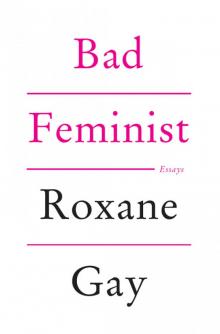 Bad Feminist
Bad Feminist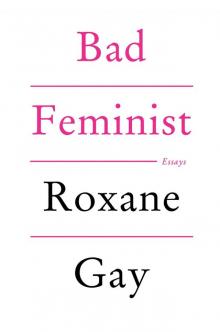 Bad Feminist: Essays
Bad Feminist: Essays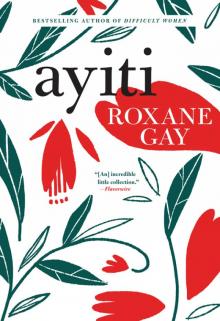 Ayiti
Ayiti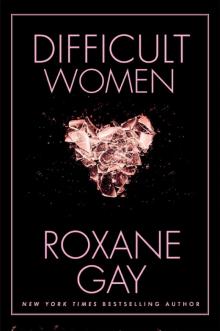 Difficult Women
Difficult Women An Untamed State
An Untamed State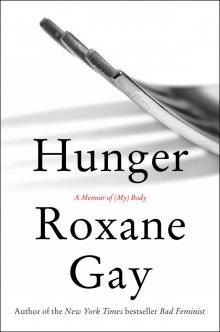 Hunger
Hunger